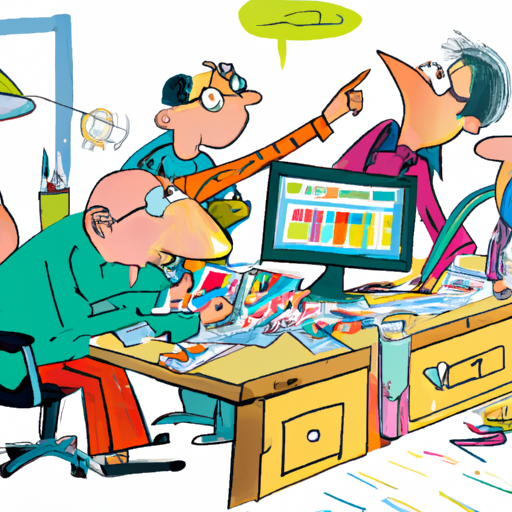This section discusses the role and responsibilities of a UX/UI designer, including conducting research, creating wireframes and prototypes, and collaborating with cross-functional teams.
It emphasizes the importance of understanding human behavior, problem-solving skills, and effective communication.The section also covers the initial stages of a designer’s workflow, such as research and wireframing.
In today’s digital age, user experience (UX) and user interface (UI) design) have become essential components of creating successful digital products and services. UX/UI designers play a crucial role in ensuring that a user’s interaction with a website or app is seamless, intuitive and enjoyable.
However, whatwhat exactly does a UX/UI designer mean on a day-to-day basis? In this article, we’ll take an in-depth look at the responsibilities, routine, and skills required for this profession. We’ll also explore how UX/UI designers collaborate with cross-functional teamsand navigate the design process.
So, if you’re curious about the behind-the-scenes workings of a UX/UI designer, read on to discover the secrets of their fascinating world.
-
- 1.Understanding the role of a UX/UI designer A deep dive into his responsibilities
-
- 2.A day in the life of a UX/UI designer revealing the routine behind the scenes
-
- 3.Mastering the Art of User Experience Exploring the Key Skills of a UX/UI Designer
-
- 4.Collaboration and Communication How UX/UI Designers Work with Cross-Functional Teams
- 5.Navigating the ProcessThe Insider’s Guide to the UX/UI Designer Workflow
1. Understanding the role of a UX/UI designer A deep dive into his responsibilities
A UX/UI designer plays a crucial role in the development of digital products, ensuring that they are easy to use and visually appealing, and meet the needs of their target audience.
Their responsibilities go beyond just creatingof attractive designs; they are involved in the entire user experience journey, from research and strategy to implementation.
One of the main responsibilities of a UX/UI designer is to conduct thorough research to achieve adeep understanding of the target user.
This involves analyzing user behavior, preferences and needs through methods such as user interviews, surveys and data analysis. By obtaining information about the target audience, the designer can create designs that align with their expectations and provide a perfect user experience.
Once the research phase is complete, the UX/UI designer moves on to creating wireframes and prototypes. Wireframes are basic models that represent the structure and functionality of a digital product, while prototypes are interactive versions thatallow testing and feedback.
These visual representations help the designer and stakeholders visualize the product flow and identify potential problems
2. A day in the life of aUX/UI designer reveals behind-the-scenes routine
Being a UX/UI designer isn’t just about creating visually appealing interfaces. It involves a complex and dynamic routine that revolves around understandinguser needs, conducting research, and designing seamless experiences.
In this section, we’ll delve into the behind-the-scenes routine of a UX/UI designer and explore the various tasks and responsibilities they undertake on a daily basis.
A typical day in the life of a UX/UI designer begins with planning and strategizing.
This involves analyzing project requirements, conducting user research, and understanding the target audience. By gaining insights into user behaviors, preferences, and pain points, designers can create solutions thateffectively meet these needs.
Once the planning phase is complete, the designer moves on to wireframing and prototyping.
This phase involves sketching out rough ideas and creating low-fidelity wireframes to visualize the layout and structure of the interface.These wireframes serve as the basis for the design process and allow designers to iterate and refine their ideas.
3. Next comes the visual design phase, where/UI Designer
A successful UX/UI designer is not only responsible for creating visually appealing interfaces, but also for creating seamless user experiences.To achieve this, they must possess a set of key skills thatto enable them to master the art of user experience.
First, a UX/UI designer must have a deep understanding of human behavior and psychology.






